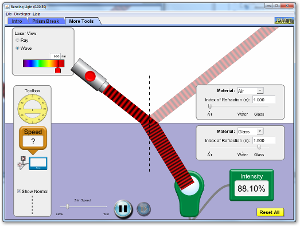Basic Notion of Converging Lenses

We use converging lenses instead of diverging lenses as experimental equipment because they can form real images which can be shown on paper.
Remember that object distances shorter than f will not have a correspondant real image.
If the image distance is measured to be positive, it does not mean it is on the same side as the object. Contrarily, a positive value of the image distance implies an image on the other side.
Remember that object distances shorter than f will not have a correspondant real image.
If the image distance is measured to be positive, it does not mean it is on the same side as the object. Contrarily, a positive value of the image distance implies an image on the other side.
Light Lab Experiment
Light lab: Lens lab
Equipment:
A converging lens
A lit candle
Stand
Clips that can be attached to the stand
Hard paper that is able to stand
Procedure/purpose: To place the candle, the lens and paper on clips, and place them on the stand respectively in order. Keep the lens in a fixed position. Keep moving the candle further and further from the lens, and arrange the paper to see a clear image in each situation. By measuring the object distance and image distance, students will be able to derive the focal distance for the converging lens and further on discover the law of lenses.
Equipment:
A converging lens
A lit candle
Stand
Clips that can be attached to the stand
Hard paper that is able to stand
Procedure/purpose: To place the candle, the lens and paper on clips, and place them on the stand respectively in order. Keep the lens in a fixed position. Keep moving the candle further and further from the lens, and arrange the paper to see a clear image in each situation. By measuring the object distance and image distance, students will be able to derive the focal distance for the converging lens and further on discover the law of lenses.
Chart for Graphing & Calculating the Focal Length of the Lens

Such a chart could be used because the focal length for the converging lens is constant disregard of the fluctuation value of the object and image distance.
Applet/Flash Related to Topic
-----------------------------------------------------------------------------------------------------------------------------------------------------------------------------------------------
NEXT
-----------------------------------------------------------------------------------------------------------------------------------------------------------------------------------------------
Basic Notion of the Refraction of Light

Basic Terms:
Snell's Law (What this is)
Angle of Incidence
Angle of Refraction
Interface
Normal
The Refractive Index
Remember that no matter how the beam is refracted, the frequency of the light doesn't change.
The formula relating the angles and the refractive indexes is:
n1*sinθ1 = n2*sinθ2
Snell's Law (What this is)
Angle of Incidence
Angle of Refraction
Interface
Normal
The Refractive Index
Remember that no matter how the beam is refracted, the frequency of the light doesn't change.
The formula relating the angles and the refractive indexes is:
n1*sinθ1 = n2*sinθ2
Light Lab Experiment
Light lab: Refraction lab
Equipment:
Laser
Thin piece of glass
Protractor
Procedure/purpose: To shine the laser through the thin piece of glass with a non-90 degree angle. And use the protractor to measure the angle of incidence and the angle of refraction to derive the coefficient of refraction for the piece of glass.
P.S.: Other apparatus could be used for the convienience of conducting the experiment as well. And it is up to your need.
Equipment:
Laser
Thin piece of glass
Protractor
Procedure/purpose: To shine the laser through the thin piece of glass with a non-90 degree angle. And use the protractor to measure the angle of incidence and the angle of refraction to derive the coefficient of refraction for the piece of glass.
P.S.: Other apparatus could be used for the convienience of conducting the experiment as well. And it is up to your need.
Chart for Graphing & Calculating the Refractive Index of the Glass

Such a chart could be used because in the formula for the angles of incidence and refraction with the refractive indexes contains an unknown constant--the refractive index of the piece of glass.

